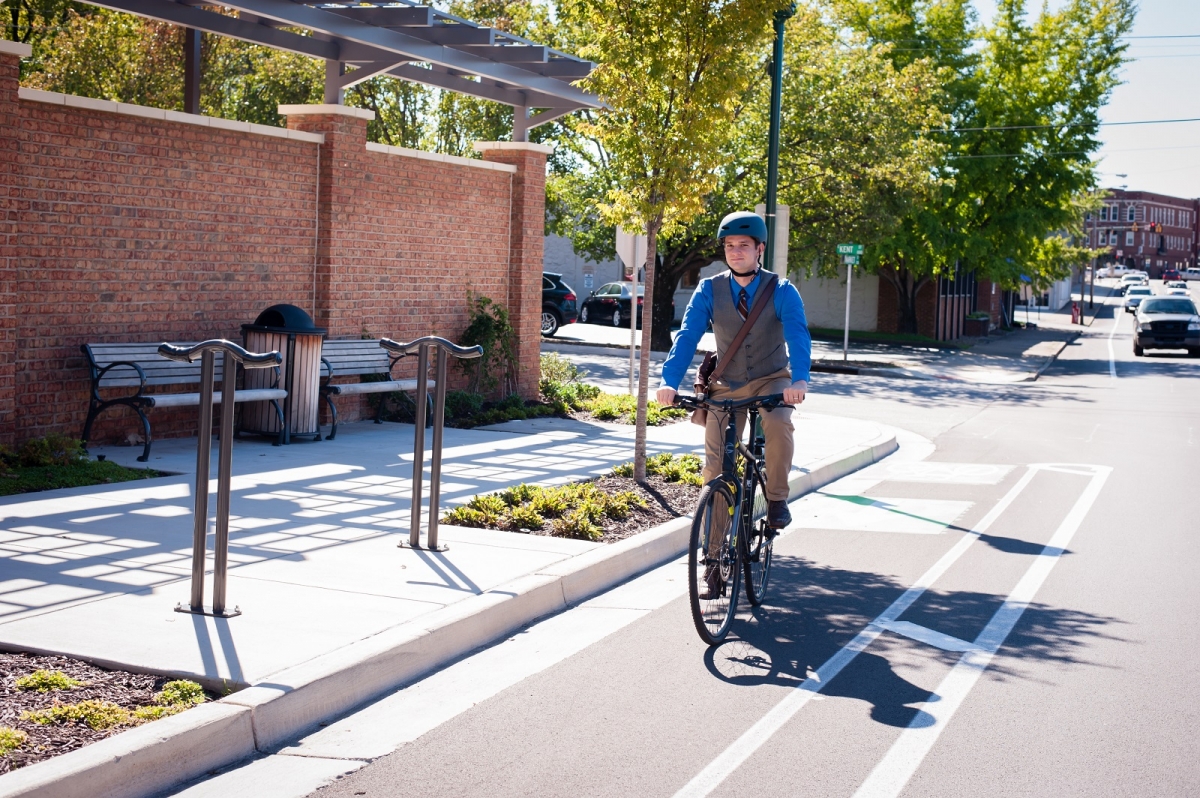
While the current FAST Act won’t expire until September 2020, it takes a lot of time for Congress to hold hearings, negotiate, come up with bills, find funding, and get them passed and signed into law. Past transportation reauthorization bills have been plagued by delays and extensions, but the Senate in particular is off to a fast start this year.
Members of the Senate Environment and Public Works committee, which is the lead for the transportation reauthorization, were asked to submit their transportation priorities in March. Now, the rest of the Senate gets their turn—with priorities due by April 4.
In partnership with the League of American Bicyclists, we have been working for months to finetune our legislative asks, meet with national organizations to familiarize them with our priorities, and asking Senate offices to include our priorities in their submissions.
Here are the top two things we are focusing on:
More money and easier implementation of the Transportation Alternatives Program
The Transportation Alternatives Program provides half of federal spending on biking and walking, supporting local projects like Safe Routes to School, sidewalks, crosswalks, bike lanes, and trails. We want to make it work better and provide more funding. Key asks include:
- Increase funding by 40 percent and allow it to grow each year as other transportation spending grows
- Shift more money to local governments by increasing the proportion of TAP that is allocated by population from 50 percent to 67 percent
- Give states more flexibility on the required local match by allowing federal safety money to substitute in as the local match and letting states average the match across all projects, meaning that each individual project wouldn’t have to meet the 20 percent match
- Let states use up to 5 percent of TAP funding to support staff and technical assistance, which should help more communities submit successful applications and get projects built more quickly
Getting more safety money to bicycle and pedestrian safety
The Highway Safety Improvement Program (HSIP) is three times as large as TAP, with $2.3 billion per year. It is focused on reducing fatalities. Yet, biking and walking fatalities are now 18 percent of all traffic deaths and get less than 1 percent of HSIP funding. While these increases would seem to be a clarion call for bold action, 18 states proposed safety goals that would only slow the rate of increase of bike/ped deaths—not even to decrease the number of people killed. Our solutions include:
- Add Safe Routes to School, Vision Zero, and non-infrastructure projects to the list of eligible uses of HSIP
- Allow more types of biking and walking projects to be built without any required state or local match
- Require states to spend safety funding in areas where fatalities and injuries for vulnerable users (i.e. people walking, biking, and rolling) are high, giving local governments a say in how HSIP is used in their areas
We’ve got a lot of work ahead of us, but are pleased to be out there talking with legislative offices about ways the next transportation bill can transform our communities into safer places for walking and biking.

